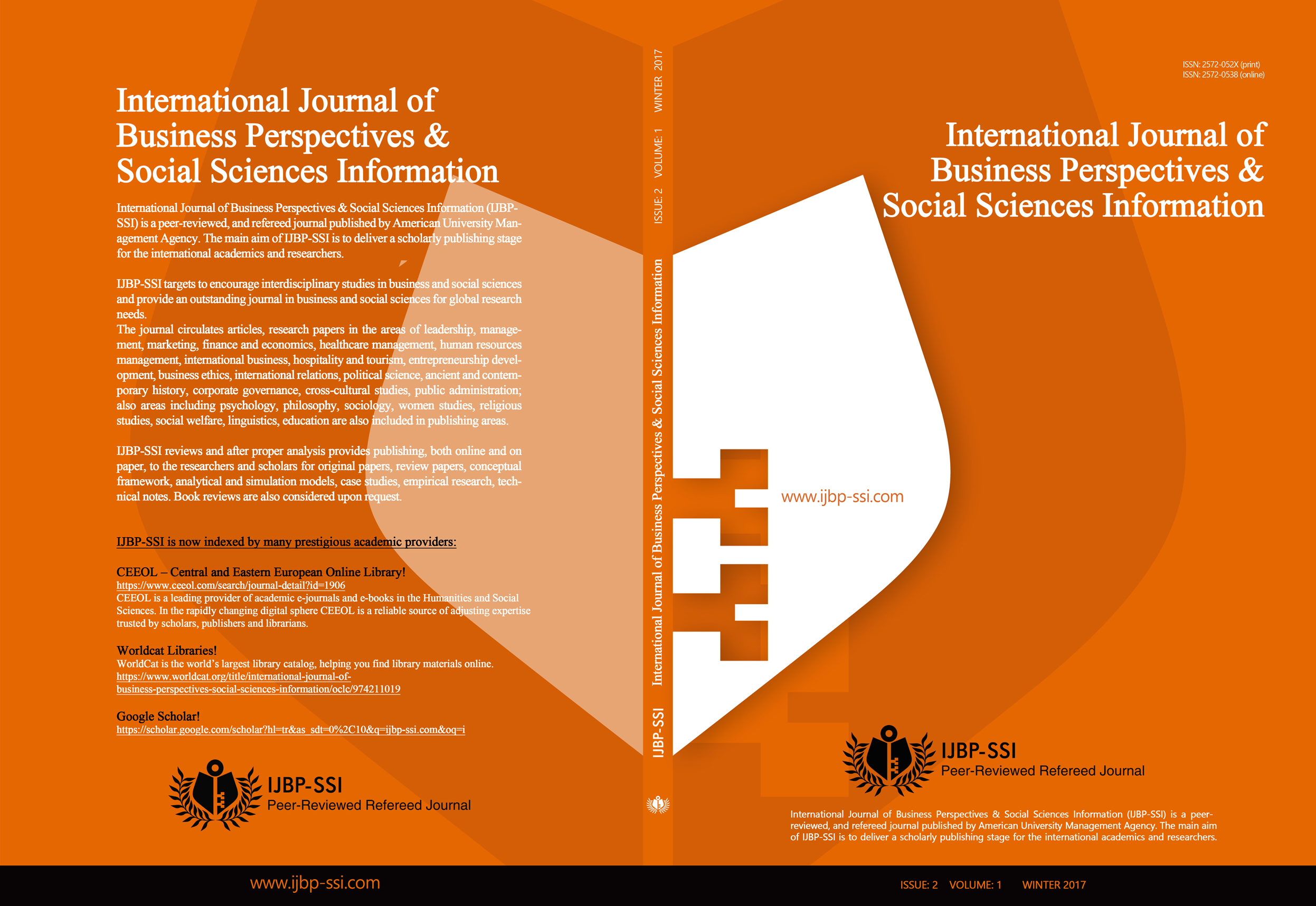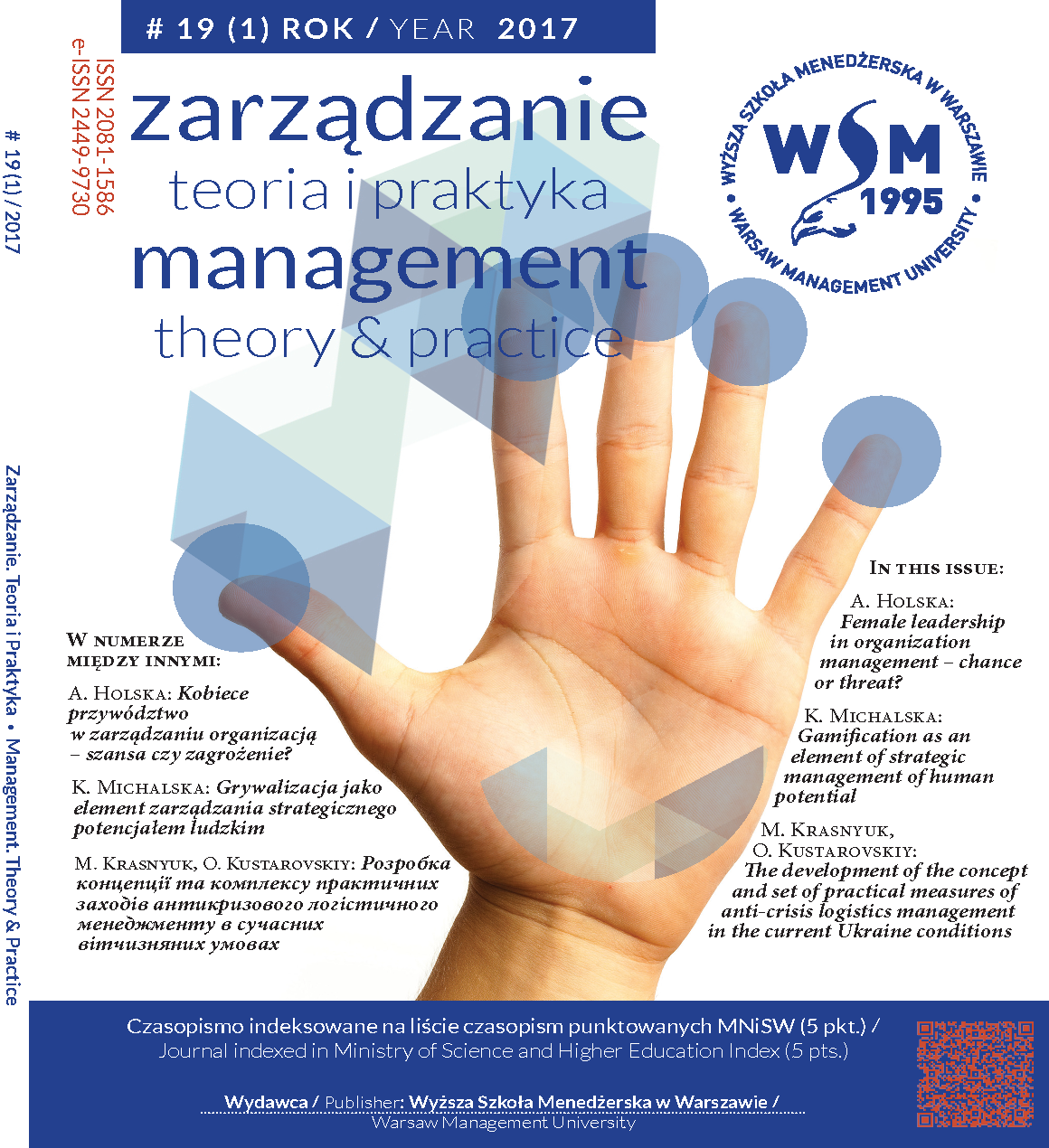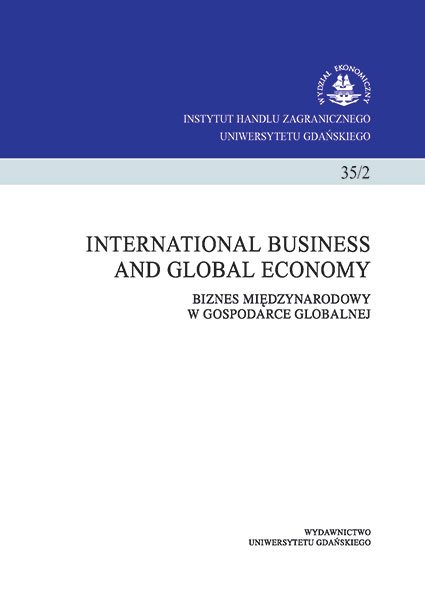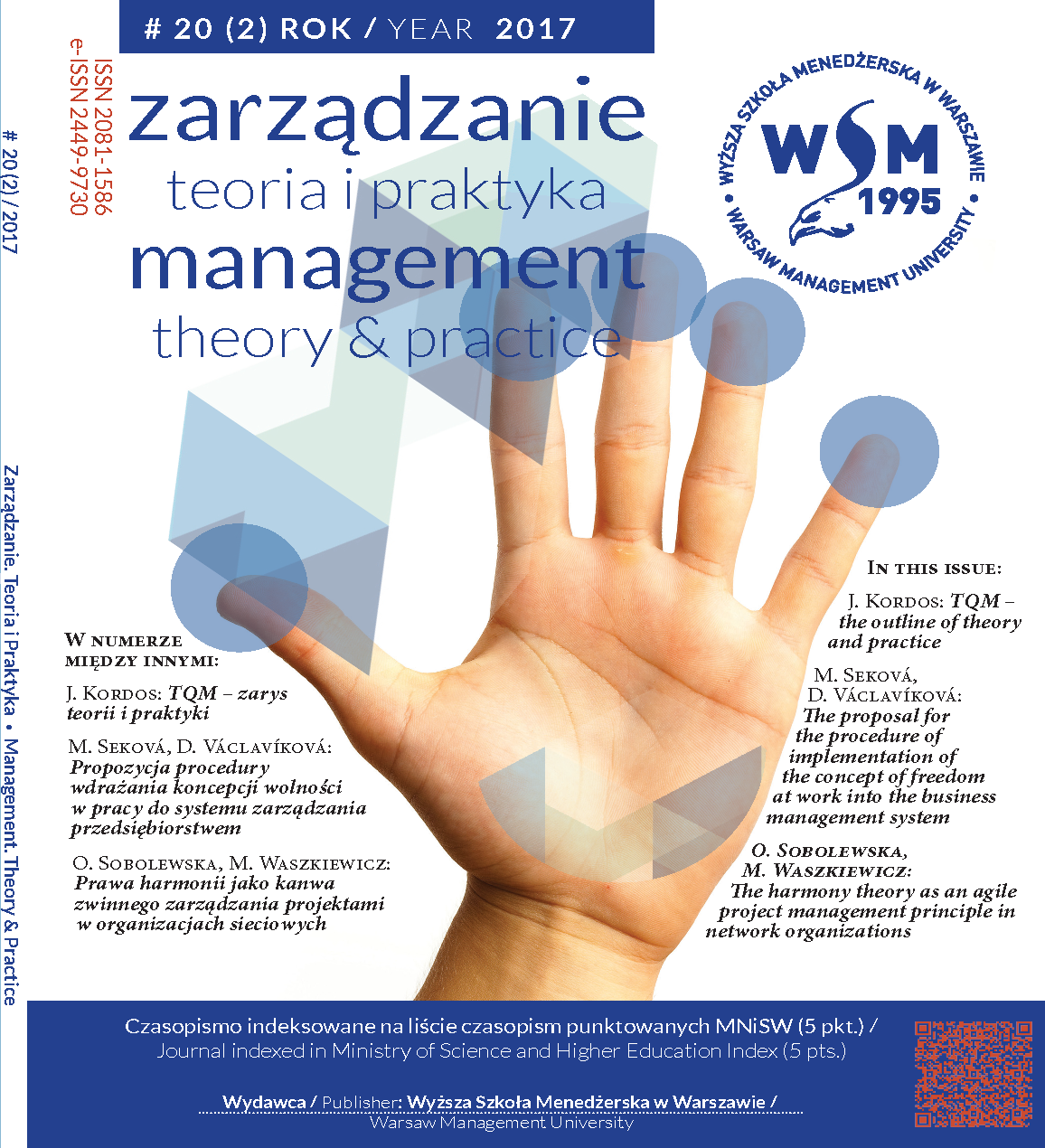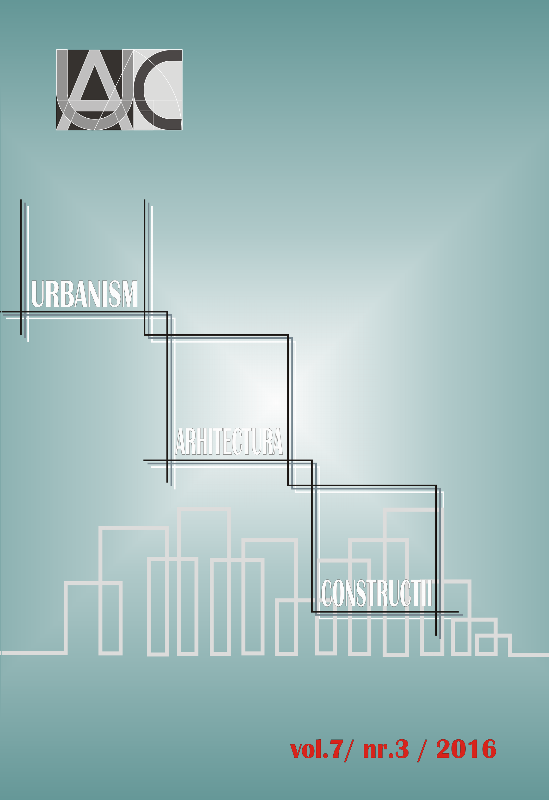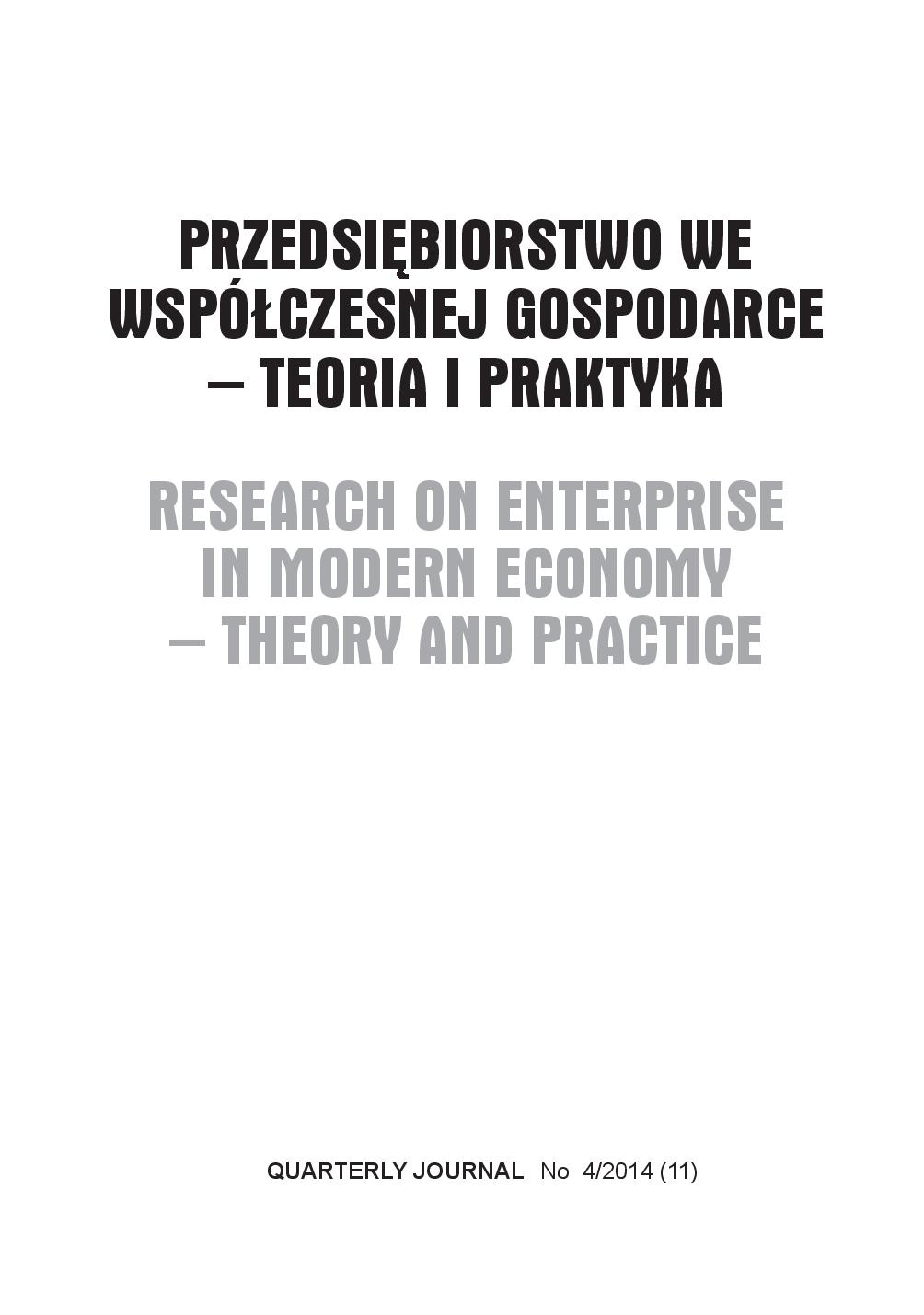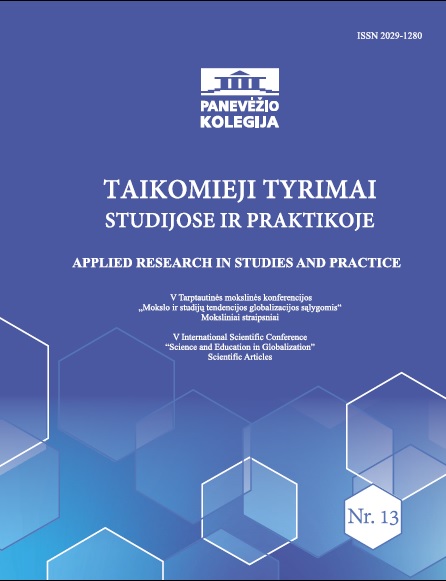
APPLICATION MODEL OF ISO QUALITY STANDARDS IN A COMPANY
ISO quality standards and their application in business activities are not only a means of achieving a higher quality but also an indispensable tool for resisting other companies offering similar services or products, especially when it comes to international cooperation and competition. Thus, the guarantee of a successful activity is a systematic approach to the processes taking place in an organization and the efficient and consistent application of quality management systems in its performance. Relevance of the research. Increasing competition and quality goals in the context of the global marketplace, encourages various organizations to improve their business processes and pay more attention to the production, its quality, processes taking place in organizations and the formation of image, both nationally and internationally. With the increasing competition among organizations, the implementation of quality management principles in the activities and their use in everyday business processes becomes very important. Each quality system has both negative and positive features, which respectively determine the application of each in an organization. Research problem. The ISO quality standards theory is well developed, but it emphasizes and highlights the benefits of this system, and sometimes presents a negative impact. International researches also present the analysis of companies and their activity in the area of ISO 9000 (ISO 9001). It is worth mentioning that in the course of several years, various scientists such as Castillo et al., (2011), Kadash (2012), Golder et al., (2012), Ollila (2012), Sachdeva (2012), Lackovic (2009), Ruževičius, (2010), Ruževičius (2005, 2008, 2010), Kaziliūnas (2006, 2010) Djerdjouri et.al., (2011), etc. assigned their works to the analysis of the quality management system and ISO quality standards. Despite the prevailing view that ISO quality standards are necessary, especially for companies operating on the international market, there is also a perception that the organization, when deciding to implement one of the quality systems, may not be able to cope with this task, and the intended investment will not buy back. Based on this, in practice, it is advisable to provide a model for applying ISO standards that would facilitate the application of standards in the enterprise, would help to disclose the benefit / meaning of its application and allow the assessment of the application of ISO 9000 family standards (in this case, ISO 9001) in its activities, notice the positive or negative sides of the system, and on the basis of the results obtained, to provide a fundamental assessment of the system. Therefore, the aim of the research is to provide the application model of ISO quality standards that would allow analyzing and evaluating quality management standards in a company. Accordingly, it is necessary to analyze academic literature on certification and implementation practice of ISO standards highlighting the benefits of ISO quality management standards. Research methods employed: Analysis of scientific literature. Based on this analysis, ISO quality standards will be defined and their assessment in the scientific context revealed. Modelling. This method will compile the information gathered in the theoretical part of the work and present the "Model of application (benefit) of the quality standard ISO 9001 in the enterprise". The application model of ISO 9001 consists of one main dimension (world-class quality level), which is defined by two components, i.e. external benefit criteria and internal benefit criteria. Accordingly, we can evaluate the criteria presented by using indicators assigned to them, which correspond to certain attributes, which are specific to the subject under consideration. The first criterion is the external benefit that provides the company with a variety of opportunities (improved marketing, and as a consequence greater satisfaction of company's products and more new customers), which later grow to a certain benefit (i.e., higher turnover, which results in higher profits). The second criterion is an internal benefit that is often not directly felt, but contributes significantly to the development of the company, as it ensures both communication, which promotes teamwork, and establishes certain systems of reward for work that are based on the contribution of each person to a certain processes in the organization. All this enables the company to develop and achieve its goals, i.e. Recognition and profit. These criterion indicators are characterized by a variety of attributes that can be used to evaluate each component element of the model. Analyzing the model, it can be argued that it is unique in the fact that in the investigated scientific literature various authors described the quality, the ISO 9001 quality management standard, but have not presented the combined benefits of this system. In majority of academic studies, the most frequently discussed topics were country certification systems (Ruževičius, 2008), certification procedures, their stages, input and output of ISO 9001 quality management system (Su et al., 2010), TQM (Ruževičius, 2010) or relationship among technology, quality, science and economic (Ruževičius, 2010), etc. The relationships between the criteria and indicators of this model are expressed by a world-class quality dimension. In order to link everything to the general benefits of the ISO 9001 standard and to achieve a comprehensive assessment, each component must be analyzed individually. After thorough analysis of academic literature on the application of quality management systems it can be concluded that quality is a fundamental attribute that has value, which increases with the satisfaction of individual or widely understood needs of the customers, and which is evaluated after the use of the final product or service. Quality management is one of the most important elements of global quality, and TQM is one of the widely used management theories and practices the theoretical development and practical application of which are relevant not only today but also will be in the future in addressing the possibilities of further development and providing the solutions for possible future problems. In the scientific literature, the following are the main advantages of the standards: the increased market opportunities (the company adopting this standard is valued by customers as being more efficient and better organized), lower costs, better reputation with stakeholders, less resource consumption, better satisfaction of customer needs, improved management control and a higher profit margin.
More...
